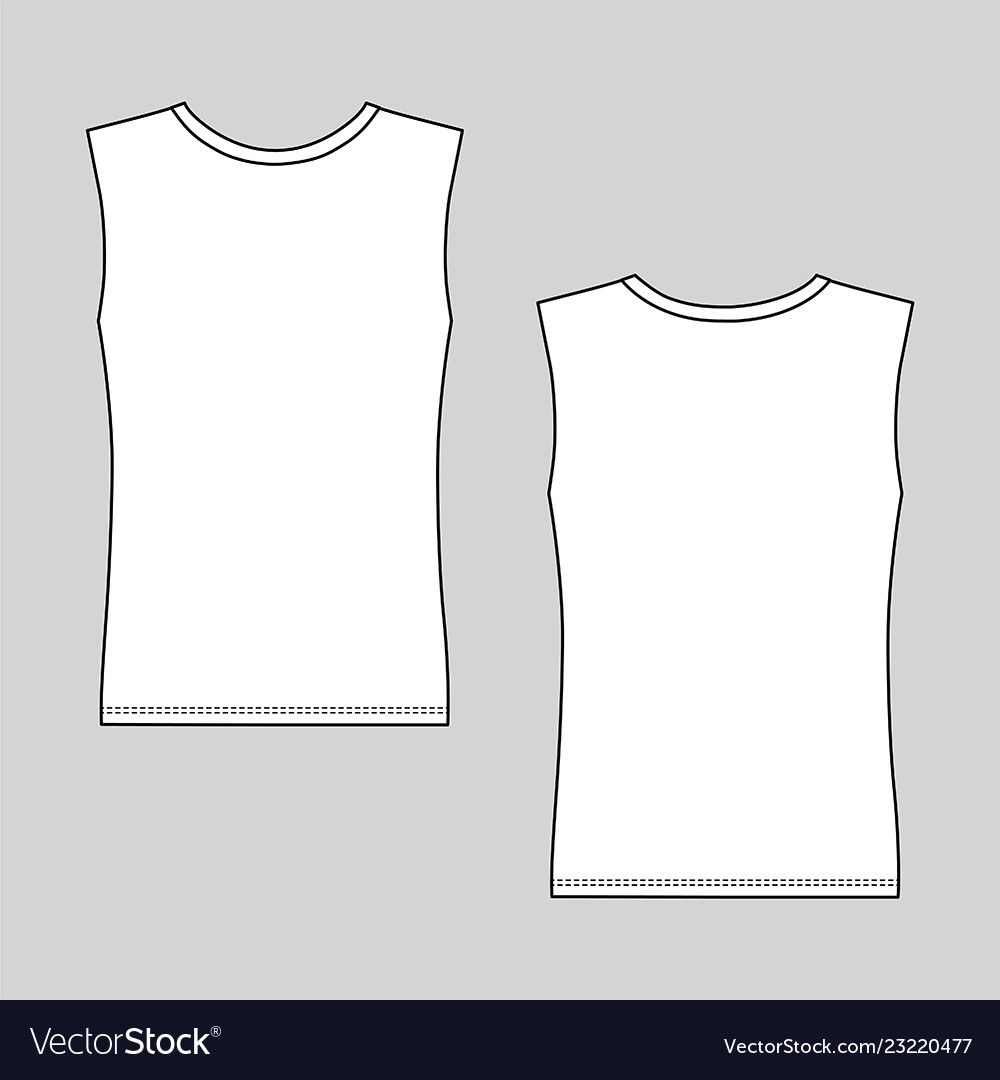
Embrace Versatility: A Comprehensive Guide to Sleeveless Shirt Templates
Introduction
Sleeveless shirts, epitomizing comfort and style, have become wardrobe staples for individuals of all ages and preferences. Whether it’s for casual wear, athletic endeavors, or professional settings, sleeveless shirts offer a versatile and practical solution. This comprehensive guide will delve into the intricacies of sleeveless shirt templates, providing aspiring designers and fashion enthusiasts with the knowledge and skills to create their own custom sleeveless shirts.
Anatomy of a Sleeveless Shirt Template
A sleeveless shirt template consists of several key components that determine its overall fit and style:
-
Front and Back Pieces: These are the primary components, forming the body of the shirt. They can be cut from different fabrics and feature varying lengths, necklines, and armholes.
-
Armhole Opening: The armhole opening determines the sleeveless nature of the shirt. It should allow for comfortable arm movement while maintaining a flattering fit.
-
Neckline: The neckline frames the face and adds visual interest. Common necklines include crew neck, V-neck, and scoop neck.
-
Shoulder Slope: The shoulder slope defines the angle of the shoulder seam. This aspect influences the shirt’s silhouette and can be tailored to complement the wearer’s body type.
Selecting the Right Fabric
The fabric choice for a sleeveless shirt template is crucial in determining its comfort, durability, and aesthetic appeal. Common fabric options include:
-
Cotton: Natural, breathable, and versatile; suitable for casual and everyday wear.
-
Linen: Linen offers excellent breathability and a relaxed drape; perfect for warm weather and casual occasions.
-
Silk: Luxurious, soft, and drapes beautifully; ideal for dressier looks.
-
Athletic fabrics: Designed for moisture-wicking and flexibility; appropriate for sports and activewear.
Sizing and Measurement
Accurate sizing is essential for a well-fitting sleeveless shirt template. It’s recommended to take precise body measurements, including:
-
Chest circumference: Measure around the widest part of the chest.
-
Waist circumference: Measure at the narrowest part of the waist.
-
Shoulder width: Measure from the top of one shoulder to the other.
-
Armhole depth: Measure from the shoulder point to the desired armhole depth.
Creating the Template
Once the measurements are taken, you can begin creating the sleeveless shirt template:
-
Draw the Front and Back Pieces: Sketch out the basic shape of the front and back pieces, incorporating the desired neckline, shoulder slope, and armhole opening.
-
Mark the Measurements: Transfer the measurements onto the template, ensuring accuracy in length and width.
-
Connect the Points: Connect the points, creating a smooth outline for the front and back pieces.
-
Add Seam Allowances: Include seam allowances of approximately 1-2 centimeters around all edges, allowing for seam construction.
Variations and Customization
The versatility of sleeveless shirt templates lies in their adaptability to different styles and preferences. You can customize your template by:
-
Experimenting with Necklines: Explore various neckline shapes, such as scoop necks, V-necks, or square necks, to suit different face shapes and personal preferences.
-
Adding Sleeves: You can modify the template to include short sleeves, long sleeves, or even flared sleeves for a unique and stylish touch.
-
Incorporating Design Elements: Add embellishments, such as appliqués, embroidery, or prints, to personalize your sleeveless shirt template and create a one-of-a-kind design.
Construction Techniques
Once the sleeveless shirt template is created, you can proceed with construction:
-
Cut the Fabric: Cut out the fabric pieces according to the template, remembering to incorporate seam allowances.
-
Sew the Shoulders: Start by sewing the shoulder seams, right sides together, using a 1-centimeter seam allowance.
-
Attach the Armholes: Fold the armhole edges twice and stitch them in place, encasing the raw edges.
-
Sew the Side Seams: With right sides together, sew the side seams, leaving an opening for the armhole.
-
Finish the Neckline: Neatly finish the neckline by folding and stitching the edges or using a neckband.
-
Hem the Bottom: Fold and stitch the bottom hem of the sleeveless shirt for a clean and professional finish.
FAQs
Q: What types of fabrics are best suited for sleeveless shirts?
A: Cotton, linen, silk, and athletic fabrics are popular choices, depending on the desired comfort level, breathability, and occasion.
Q: How do I determine the right size for a sleeveless shirt template?
A: Take accurate body measurements and refer to sizing charts to find the most suitable size for your needs.
Q: Can I customize the sleeveless shirt template to fit my body shape?
A: Yes, you can adjust the neckline, shoulder slope, and armhole opening to create a bespoke template that complements your body type.
Q: What are some creative ways to personalize a sleeveless shirt?
A: Add appliqués, embroidery, unique prints, or embellishments to create a one-of-a-kind design that reflects your personal style.
Q: How do I ensure a perfect fit when constructing a sleeveless shirt?
A: Follow the measurements accurately, use a sewing machine to create even seams, and try on the shirt during construction to make any necessary adjustments for a snug fit.
Conclusion
With the knowledge gained from this comprehensive guide, you possess the power to create custom sleeveless shirt templates that embody your unique style and meet your specific needs. Whether you’re a seasoned designer or a novice enthusiast, embrace the versatility of sleeveless shirts and explore the limitless possibilities they offer. Experiment with different fabrics, designs, and construction techniques to create sleeveless shirts that perfectly complement your wardrobe and empower you to express your individuality.






